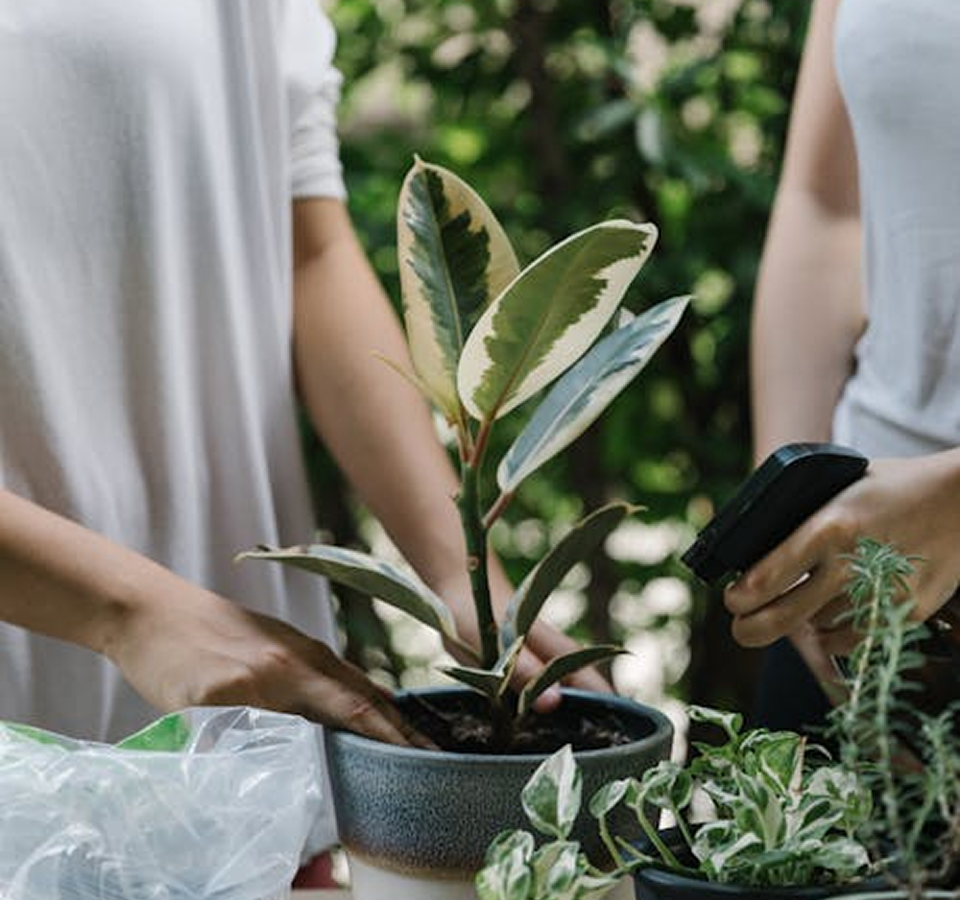Garden Maintenance in Marylebone

Maintaining a beautiful garden in the heart of London’s vibrant Marylebone district can be both rewarding and challenging. Whether you’re a seasoned gardener or a novice looking to enhance your outdoor space, understanding the essentials of garden maintenance is key to achieving a lush, thriving garden.
Marylebone, known for its picturesque streets and charming residences, offers a unique environment for gardening enthusiasts. The combination of urban living and accessible green spaces creates opportunities for diverse garden styles, from traditional English gardens to modern minimalist landscapes.
In this comprehensive guide, we’ll explore the best practices for garden maintenance in Marylebone, providing you with the knowledge and tools needed to keep your garden in top condition all year round.
Understanding Marylebone’s Climate

Marylebone experiences a temperate climate, characterized by mild winters and warm summers. This climate is ideal for a wide variety of plants, but it also requires specific maintenance strategies to ensure your garden’s health.
The region receives moderate rainfall throughout the year, which supports healthy plant growth. However, the urban setting can lead to microclimates, where certain areas of your garden may receive more sunlight or shade, or experience different moisture levels. Understanding these microclimates is essential for effective garden maintenance.
Additionally, Marylebone’s urban environment means that gardens may be exposed to pollution and limited space. Selecting plants that are resilient and well-suited to these conditions can significantly enhance your garden’s resilience and beauty.
Seasonal Maintenance Tips
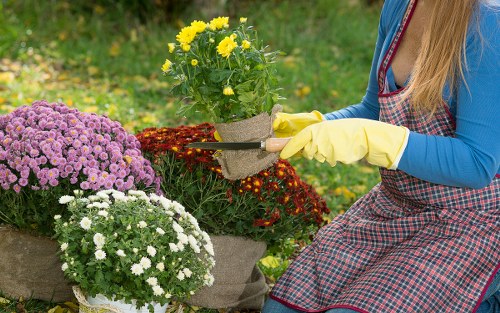
Spring
Spring is the perfect time to rejuvenate your garden after the winter months. Begin by clearing out winter debris, pruning dead branches, and preparing your soil for new growth. Planting spring bulbs and perennials can add vibrant colors and textures to your garden.
Summer
Summer maintenance focuses on watering, weeding, and ensuring your plants receive adequate sunlight. Mulching can help retain moisture and suppress weeds, while regular feeding with appropriate fertilizers supports robust plant growth.
Autumn
As the temperatures cool, prepare your garden for the winter by adding compost, pruning back perennials, and planting autumn-flowering species. Protect sensitive plants from frost by using cloches or garden fleece.
Essential Garden Maintenance Practices
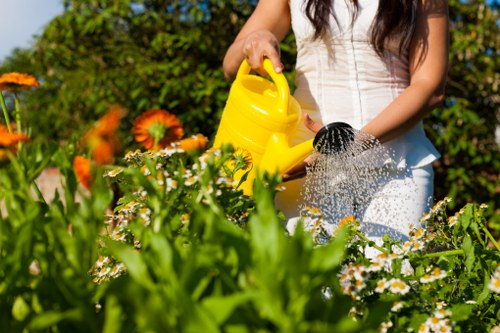
Consistent maintenance is the cornerstone of a thriving garden. Here are some essential practices to incorporate into your routine:
- Pruning: Regular pruning helps maintain plant health, promotes growth, and enhances the overall appearance of your garden.
- Watering: Proper watering techniques ensure that plants receive the right amount of moisture without overwatering, which can lead to root rot.
- Weeding: Removing weeds prevents them from competing with your plants for nutrients and water.
- Fertilizing: Providing balanced nutrients supports vigorous plant growth and flowering.
- Pest Control: Implementing natural pest control methods can protect your garden from common pests without harming the environment.
Implementing these practices regularly will help maintain the health and beauty of your garden throughout the year.
Choosing the Right Plants
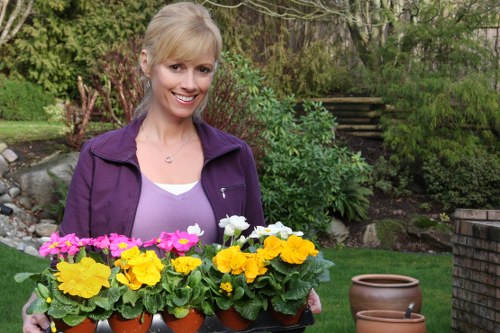
Selecting plants that thrive in Marylebone’s climate is crucial for successful garden maintenance. Consider incorporating a mix of native and drought-tolerant plants to ensure resilience against seasonal changes and urban stressors.
Popular choices include:
- Lavender: Known for its fragrant flowers and ability to attract pollinators.
- Hostas: Ideal for shaded areas, offering lush foliage and subtle blooms.
- Roses: Classic and versatile, suitable for various garden styles.
- Succulents: Perfect for minimalist gardens, requiring minimal water and maintenance.
- Herbs: Functional and fragrant, enhancing both the aesthetics and utility of your garden.
By carefully selecting plants that suit your garden’s conditions, you can create a harmonious and low-maintenance outdoor space.
Professional Garden Maintenance Services
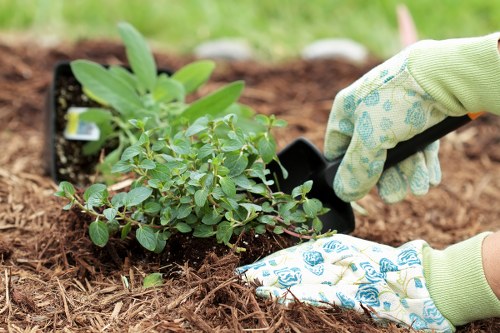
While DIY garden maintenance is feasible, enlisting professional services can elevate your garden’s appearance and health. Professional gardeners in Marylebone offer expertise in plant selection, landscape design, and ongoing maintenance, ensuring your garden remains pristine with minimal effort on your part.
Services typically include:
- Regular Maintenance Visits: Scheduled visits for tasks such as pruning, weeding, and fertilizing.
- Seasonal Clean-Up: Comprehensive clean-ups to prepare your garden for upcoming seasons.
- Landscape Design: Customized design services to transform your garden into a personalized retreat.
- Pest and Disease Management: Effective solutions to protect your plants from common threats.
- Irrigation Systems: Installation and maintenance of efficient watering systems to ensure optimal plant hydration.
Investing in professional garden maintenance can save time, reduce stress, and enhance the overall beauty and functionality of your outdoor space.
Benefits of Hiring Local Gardeners
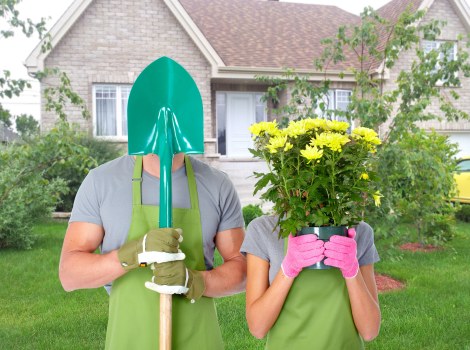
Hiring local gardeners in Marylebone offers several advantages:
- Local Expertise: Familiarity with the local climate, soil conditions, and plant varieties ensures tailored care for your garden.
- Convenient Access: Proximity allows for more flexible scheduling and prompt responses to garden needs.
- Community Support: Supporting local businesses contributes to the community’s economic health and sustainability.
Local gardeners can provide personalized services that align with your specific garden goals, enhancing both the aesthetic and ecological value of your outdoor space.
DIY Garden Maintenance Tips
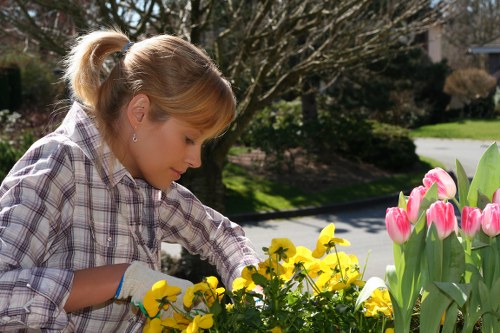
For those who prefer a hands-on approach, DIY garden maintenance can be both fulfilling and cost-effective. Here are some tips to help you maintain your Marylebone garden:
- Plan Your Garden: Designate areas for different plant types based on sunlight, soil, and moisture requirements.
- Use Quality Tools: Invest in reliable gardening tools to make maintenance tasks easier and more efficient.
- Soil Health: Regularly amend your soil with compost or organic matter to improve fertility and structure.
- Mulching: Apply mulch to conserve moisture, regulate soil temperature, and suppress weeds.
- Regular Monitoring: Keep an eye out for signs of pests, diseases, or nutrient deficiencies to address issues promptly.
By following these DIY tips, you can achieve a healthy and beautiful garden with dedication and the right knowledge.
Sustainable Gardening Practices
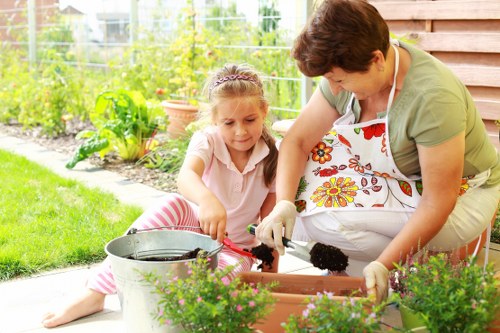
Embracing sustainable gardening practices not only benefits your garden but also the environment. Here are some sustainable techniques to consider:
- Composting: Recycle garden waste into nutrient-rich compost to enhance soil health.
- Rainwater Harvesting: Collect rainwater for irrigation, reducing water consumption and utility costs.
- Native Plants: Incorporate native species that require less water and are more resistant to local pests.
- Natural Pest Control: Use beneficial insects, such as ladybugs, to manage pest populations organically.
- Organic Fertilizers: Choose natural fertilizers over chemical alternatives to promote a healthy ecosystem.
Implementing these sustainable practices can lead to a more resilient and eco-friendly garden, contributing to the overall health of Marylebone’s green spaces.
Enhancing Garden Aesthetics

Aesthetics play a significant role in garden maintenance. A well-maintained garden should not only be healthy but also visually appealing. Here are some ways to enhance your garden’s beauty:
- Color Coordination: Choose plants with complementary colors to create a harmonious look.
- Texture Variation: Incorporate plants with different foliage textures to add depth and interest.
- Focal Points: Designate areas with standout features, such as a specimen plant, garden sculpture, or water feature.
- Pathways and Borders: Define garden spaces with pathways and borders to create structure and guide movement.
- Lighting: Use outdoor lighting to highlight key features and extend the usability of your garden into the evening.
By thoughtfully planning your garden’s aesthetic elements, you can create a space that is both beautiful and functional.
Seasonal Flower Planting
Seasonal flower planting ensures continuous color and interest throughout the year. Here are some recommendations for each season:
- Spring: Tulips, daffodils, and hyacinths bring vibrant colors after the winter months.
- Summer: Roses, sunflowers, and lavender provide rich hues and delightful fragrances during the warmer months.
- Autumn: Chrysanthemums, asters, and ornamental grasses add texture and color as the leaves change.
- Winter: Pansies, hellebores, and evergreen shrubs maintain structure and color during the colder months.
Strategically planting seasonal flowers can enhance your garden’s beauty year-round and provide ongoing interest for both you and your visitors.
Maintaining Garden Structures
Garden structures, such as fences, sheds, and pergolas, require regular maintenance to ensure their longevity and functionality. Here are some tips for maintaining these elements:
- Inspect Regularly: Check for signs of wear, damage, or rot to address issues before they escalate.
- Clean and Protect: Keep structures clean and apply protective coatings, such as paint or sealant, to prevent deterioration.
- Repair Promptly: Fix any damage immediately to maintain the integrity and appearance of your garden structures.
- Organize Tools: Use storage solutions to keep gardening tools and equipment organized and easily accessible.
Proper maintenance of garden structures not only enhances the functionality of your outdoor space but also contributes to its overall aesthetic appeal.
Pathway and Patio Care
Pathways and patios are essential components of garden design, providing both functionality and visual interest. Keeping these areas well-maintained involves regular cleaning, weeding, and repairs:
- Cleaning: Sweep pathways and patios regularly to remove debris and prevent staining.
- Weeding: Remove weeds from cracks and joints to maintain a neat appearance.
- Repairs: Fix any loose or damaged pavers to ensure safety and aesthetics.
Well-maintained pathways and patios enhance the usability of your garden and contribute to its overall charm.
Implementing Sustainable Irrigation
Efficient irrigation is crucial for maintaining a healthy garden while conserving water. Here are some sustainable irrigation practices suitable for Marylebone gardens:
- Drip Irrigation: Delivers water directly to the plant roots, reducing evaporation and water waste.
- Rain Barrels: Collect rainwater for use in your irrigation system, minimizing reliance on tap water.
- Smart Controllers: Automated systems that adjust watering schedules based on weather conditions and soil moisture levels.
- Mulching: Apply mulch to retain soil moisture and reduce the need for frequent watering.
By adopting these sustainable irrigation methods, you can maintain a vibrant garden while promoting environmental responsibility.
Soil Management and Health
Healthy soil is the foundation of a thriving garden. Proper soil management involves regular testing, amending, and maintaining soil structure:
- Soil Testing: Assess soil pH and nutrient levels to determine necessary amendments.
- Composting: Incorporate organic matter to improve soil fertility and structure.
- Crop Rotation: Rotate plant families to prevent soil depletion and reduce pest buildup.
- Cover Crops: Grow cover crops during off-seasons to protect and enrich the soil.
Maintaining healthy soil ensures that your plants receive the nutrients they need to grow strong and resilient.
Lighting and Electrical Maintenance
Proper lighting enhances the beauty and safety of your garden, especially during evening hours. Maintaining your garden’s electrical systems involves regular inspections and safe practices:
- Inspect Fixtures: Regularly check all lighting fixtures for damage or wear.
- Weatherproofing: Ensure that outdoor electrical components are protected against the elements.
- Energy-Efficient Lighting: Use LED or solar-powered lights to reduce energy consumption and costs.
- Safe Wiring: Hire a professional electrician to install and maintain complex lighting systems to prevent hazards.
Well-maintained garden lighting not only highlights your garden’s features but also creates a welcoming and safe environment.
Garden Furniture and Decor Maintenance
Garden furniture and decor add personality and comfort to your outdoor space. Proper maintenance ensures their longevity and appearance:
- Cleaning: Regularly clean furniture to remove dirt, pollen, and other debris.
- Protection: Use protective covers or store furniture during harsh weather to prevent damage.
- Repairs: Fix any broken parts promptly to maintain functionality and aesthetics.
- Seasonal Care: Treat wooden furniture with appropriate sealants to protect against moisture and decay.
By maintaining your garden furniture and decor, you can enjoy a stylish and comfortable outdoor living space for years to come.
Integrating Technology in Garden Maintenance
Modern technology offers innovative solutions to streamline garden maintenance in Marylebone. From smart irrigation systems to garden planning apps, technology can enhance your gardening experience:
- Smart Irrigation: Automated watering systems that adjust based on weather forecasts and soil moisture levels.
- Garden Planning Software: Tools that help design and visualize garden layouts, plant placements, and seasonal changes.
- Remote Monitoring: Sensors that track soil health, weather conditions, and plant growth, providing real-time data for informed decision-making.
- Robotic Tools: Automated lawn mowers and weeders that reduce manual labor and improve efficiency.
By integrating technology into your garden maintenance routine, you can achieve greater precision, efficiency, and enjoyment in your gardening endeavors.
Utilizing Mobile Apps for Gardening
Mobile apps can be invaluable tools for garden maintenance, offering features such as plant identification, care reminders, and design assistance:
- Plant Identification: Apps that help identify plants and provide care instructions based on photos.
- Care Reminders: Set alerts for watering, fertilizing, and other maintenance tasks to ensure timely care.
- Garden Design: Interactive tools for planning garden layouts, selecting plants, and visualizing seasonal changes.
- Pest Identification: Identify common garden pests and receive treatment recommendations.
Leveraging these apps can make garden maintenance more organized and enjoyable, allowing you to focus on what you love most—gardening.
Creating a Sustainable Garden Ecosystem
Building a sustainable garden ecosystem benefits both your garden and the environment. It involves creating a balanced environment where plants, insects, and wildlife coexist harmoniously:
- Beneficial Insects: Encourage the presence of bees, butterflies, and ladybugs to aid in pollination and pest control.
- Wildlife Habitat: Incorporate birdhouses, bat boxes, and water features to attract and support local wildlife.
- Diverse Plant Selection: Plant a variety of species to promote biodiversity and resilience against pests and diseases.
- Organic Practices: Use organic fertilizers and natural pest control methods to maintain a healthy ecosystem.
By fostering a sustainable garden ecosystem, you contribute to the local environment and create a vibrant, self-sustaining garden.
Composting and Waste Reduction
Composting is an essential practice for sustainable garden maintenance. It reduces waste, enriches soil, and lowers your garden’s environmental footprint:
- Organic Waste: Compost kitchen scraps, garden trimmings, and other organic matter to create nutrient-rich compost.
- Compost Bins: Invest in a quality compost bin to efficiently manage and process organic waste.
- Maintenance: Regularly turn and aerate the compost to speed up decomposition and prevent odors.
- Application: Use the finished compost to improve soil structure, fertility, and moisture retention in your garden.
By incorporating composting into your garden maintenance routine, you create a sustainable cycle that benefits both your garden and the planet.
Final Thoughts on Garden Maintenance in Marylebone
Maintaining a garden in Marylebone requires a blend of knowledge, dedication, and the right techniques. By understanding the local climate, implementing essential maintenance practices, and embracing sustainable methods, you can create and sustain a beautiful, healthy garden that enhances your home and contributes to the community’s green spaces.
Whether you choose to embark on this journey yourself or enlist the help of professional garden maintenance services, the rewards of a well-tended garden are well worth the effort.
Ready to transform your garden? Contact us today to learn more about our expert garden maintenance services in Marylebone and book your service now.
